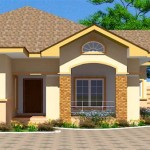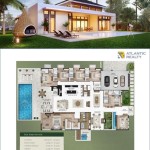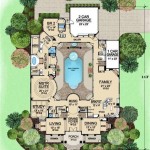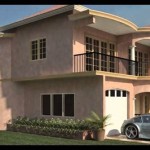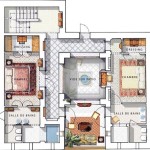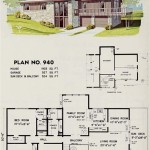Amazing House Plans: Finding the Perfect Blueprint for Your Dream Home
Building a home is a significant undertaking, and the foundation of a successful project lies in a well-designed house plan. A comprehensive house plan provides a roadmap for the entire construction process, detailing everything from room dimensions and layouts to electrical and plumbing systems. Finding an amazing house plan involves careful consideration of various factors, ensuring the chosen design aligns with individual needs, lifestyle, and budget.
The first step in the search for an amazing house plan involves identifying specific requirements and preferences. Consider the desired number of bedrooms and bathrooms, the overall square footage, and the style of the home. Think about how the space will be used, considering factors such as family size, entertaining needs, and work-from-home arrangements. Clearly defined needs will help narrow the search and focus on plans that meet specific criteria.
Architectural styles play a significant role in the aesthetic appeal of a house. From traditional designs like Colonial and Victorian to contemporary styles such as Modern and Farmhouse, each style offers distinct characteristics and features. Researching various architectural styles can help individuals identify a preferred aesthetic and narrow the search for a suitable house plan.
Lot size and orientation are crucial considerations when choosing a house plan. A plan designed for a large lot may not be suitable for a smaller urban property. Similarly, the orientation of the house on the lot can impact natural light and energy efficiency. Analyzing the lot's characteristics and incorporating them into the plan selection process ensures a harmonious relationship between the house and its surroundings.
Budgetary constraints are a significant factor in any construction project. House plans vary significantly in complexity and size, directly impacting construction costs. Establishing a realistic budget early in the planning process helps avoid selecting a plan that exceeds financial limitations. Working with a financial advisor can provide valuable insights into construction financing options and help determine a feasible budget.
Accessibility features are an essential consideration for individuals with mobility challenges or those planning for aging in place. Incorporating features such as wider doorways, ramps, and grab bars can enhance the usability and safety of the home. Addressing accessibility needs during the plan selection process ensures the chosen design caters to the long-term needs of the occupants.
Sustainability and energy efficiency are increasingly important factors in modern home design. Incorporating energy-efficient features such as proper insulation, energy-efficient windows, and solar panels can reduce long-term energy costs and minimize environmental impact. Selecting a house plan that prioritizes sustainability aligns with environmentally conscious building practices.
Numerous online resources offer a vast selection of house plans. Reputable online platforms provide detailed floor plans, elevations, and even 3D renderings, allowing individuals to visualize the finished product. Carefully reviewing the features and specifications offered by different online platforms can help locate a plan that meets specific requirements.
Working with an architect or a home designer provides personalized guidance and expertise throughout the design process. Architects can customize existing plans or create entirely new designs tailored to individual needs and preferences. Collaborating with a professional ensures the chosen plan adheres to building codes and incorporates specific design elements.
Local building codes and regulations dictate various aspects of construction, including structural requirements, fire safety, and accessibility standards. Ensuring the chosen house plan complies with local regulations is crucial for obtaining building permits and avoiding potential legal issues. Consulting with local authorities or a qualified professional can help navigate the complexities of building codes.
Reviewing testimonials and examples of completed projects can provide valuable insights into the quality and functionality of different house plans. Seeing how a plan translates into a finished home can help individuals visualize the final product and assess its suitability for their needs. Researching completed projects offers a practical perspective on the design and its real-world application.
Flexibility and adaptability are essential qualities in a well-designed house plan. Life circumstances and needs can change over time, and a flexible plan allows for future modifications and expansions. Considering the potential for future renovations or additions during the plan selection process ensures the chosen design can adapt to evolving needs.
Maintenance and upkeep are ongoing considerations for any homeowner. Choosing materials and finishes that are durable and easy to maintain can reduce long-term costs and effort. Factoring in maintenance requirements during the plan selection process ensures the chosen design aligns with practical considerations.
Careful consideration of these factors contributes significantly to finding an amazing house plan that meets individual needs and preferences. A well-chosen plan sets the stage for a successful construction project and a dream home that provides comfort and functionality for years to come.

What Is In A Set Of House Plans Manor Floor Layouts
The Most Beautiful House Plans Right Now Houseplans Blog Com
The Most Beautiful House Plans Right Now Houseplans Blog Com

5 Tips To Help You Find The Perfect House Plan Designers

Amazing Beautiful House Plans With All Dimensions Engineering Discoveries Create Floor

Plan 66271we Mediterranean Dream Style House Plans

Cottageville Affordable Southern Style House Plan 8787

Amazing House Plans Single Y Family Model Plan

Top 50 Amazing House Plans For Diffe Size Areas Engineering Discoveries

Amazing House Plans Single Y Family Model Plan


